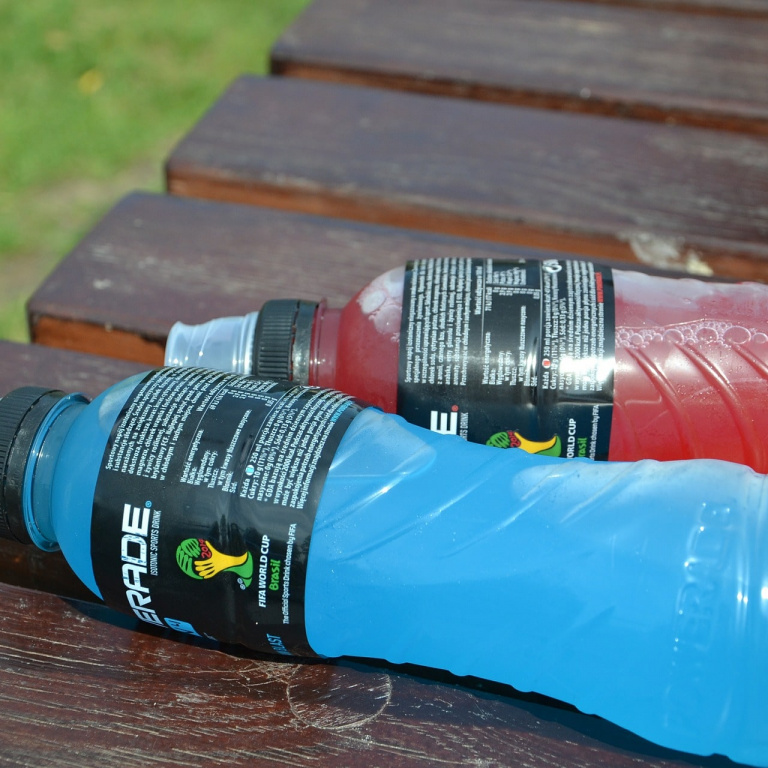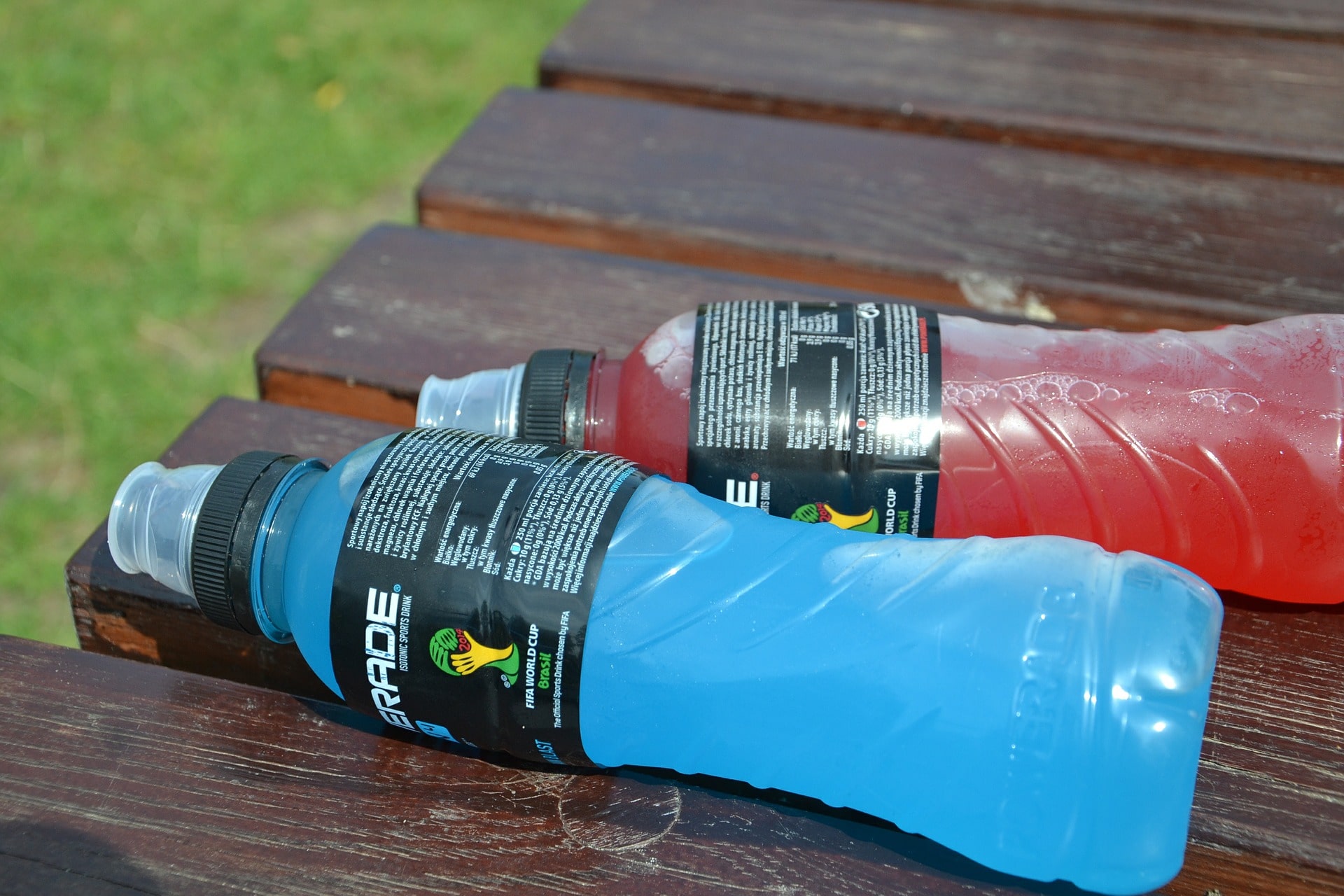Are electrolytes beneficial to your training?
6 minute readIf you’ve ever taken part in an endurance event, or a really intense workout, did you notice white lines on your cap, t-shirt or even across your face? This is the salt that you lost during exercise. Some of us are saltier sweaters than others and this can influence your sports performance.
Electrolyte supplementation is not discussed often, however it has a huge impact on endurance athletes. In this article we’re going to tell you exactly what electrolytes are, why you need them and how to go about choosing the right supplement.
What are electrolytes?
Essentially, electrolytes are a group of minerals that form electrically charged particles. They travel through bodily fluid and conduct electrical activity that is used for some of the body’s functions including; muscle contractions, regulating blood pressure and controlling fluid balance.
The main minerals found are; sodium, chloride, magnesium, potassium and calcium. Sodium, chloride and potassium help to regulate fluid whilst magnesium and calcium aid with muscle function.
Factors affecting sweat levels in endurance sports
When you sweat, not only do you lose water, but electrolytes too. During endurance activities your body’s metabolic demand and heat production rise. As a result this leads to increased blood flow to the muscles and skin and increased sweat production to remove excess heat.
Although sweating is essential, too much of it can reduce the amount of water in the body as well as reducing plasma and stroke volume. It also causes your heart rate to rise and elevates your core temperature. But what does all of this mean? It can have a negative impact on your performance and potentially cause health problems, both long and short term.
The three main factors that affect the amount of sweat you produce are:
Exercise intensity – If you’re doing a difficult session i.e. a CrossFit WOD or circuits, this will make you sweat more than low intensity exercise such as walking.
Exercise duration – When you’re doing steady state endurance training for over an hour then you should consider your water and salt intake.
External temperature – The hotter it is the more you’ll sweat. Don’t forget to take into account the humidity too. The sun may not be shining but if the temperature is warmer than usual you will probably sweat more.
Hyponatraemia
Although performance is important, your health is even more important and too much sweat can be detrimental to both. The average level of sodium in sweat is 20-80 mmol/L. Sodium and chloride are the minerals lost the most when sweating in comparison to the other minerals. Plasma sodium levels average between 130-150 mmol/L, if it drops below this then hyponatraemia will occur. This is when there is too little sodium in the blood. It usually occurs from sweating excessively or drinking too much water without any sodium. Symptoms of hyponatremia include:
- Muscle cramps
- Muscle weakness
- Fatigue
- Nausea
- Coma
In extreme circumstances, hyponatremia can be fatal, therefore it is essential that you’re fuelling your body appropriately when training for endurance activities.
Determine how many electrolytes you need
As with any nutrition based determinant, it varies from person to person. Some of us are saltier sweaters than others and this impacts the number of electrolytes you need to replace. The amount of salt you produce in your sweat comes down to genetics, the food you eat and the external temperature.
As a general rule of thumb, you should never start a workout thirsty and so drinking water is essential within 60 minutes of a training session. If you’re doing an activity for longer than 60 minutes and you know that you’re a salty sweater then consider eating a salty snack such as nuts 60-90 minutes before training too.
Because of the variety between people, it’s impossible to give an accurate equation for how many electrolytes each individual needs. If you are eager to understand more about your own sweat rate there are companies that will test and provide you with a personalised hydration plan.
On average, sweat rate is anything between 0.5-1.75 litres per hour.
The average amount of sodium per pound of sweat is usually between 200mg-1100mg.
To workout your sweat rate, weigh yourself before and immediately after an hour run/cycle/high intensity workout. The weight difference between the two is your sweat rate.
For example, if you’ve lost 4 pounds (1.8 litres) of sweat and the average amount of sodium you lose is 500mg per pound of bodyweight, you’ll have lost approximately 2000 mg of sodium.
Simple equations such as this can help give you a baseline for how many electrolytes to include in your training, however they won’t be accurate.
Remember, if you’re taking electrolytes when you’re tired then it’s already too late. Try to consume them in small regular quantities such as every 15 minutes so that you don’t tire, but also don’t experience GI (gastrointestinal) issues from drinking too much at once.
Choosing your supplement
As with all supplements, it’s going to be trial and error finding the right one for you. Some people prefer gels whereas others prefer tabs or whole foods. The first thing to consider when choosing is personal preference. Don’t take something that you’re not going to enjoy because it won’t make the gruelling workout any better.
Secondly, make sure to check the number of electrolytes in the supplement. It should have at least 250 mg of sodium per serving. You also want other electrolytes (magnesium, calcium etc.) to be included, otherwise you won’t be getting all of the nutrients you need.
Finally, take into consideration GI problems. For some people processed and high sugar supplements can cause stomach issues, you don’t want to be caught out mid race.
Natural food can also provide us with most of the vitamins and minerals that we need. If you want to take a natural approach to your training, these are some foods that you should consider eating pre, intra and post workout:
Sodium: Salted nuts
Potassium: Bananas, citrus fruits and dark leafy greens
Magnesium: Spinach, cashew nuts and peanut butter
Calcium: Milk, almonds and broccoli
Chloride: Tomatoes and celery
Regardless of the method you choose, it is all about trial and error. Test which supplements work for you and then stick to it. If you’re an endurance athlete or taking part in high intensity exercise then you should consider supplementing electrolytes to improve your performance.
If you’re a fitness professional or even just a fitness enthusiast who wants to learn more about how supplements can be used to optimise exercise performance, master this topic with our online Level 3 Supplements for Sport and Exercise course.
Enjoyed this article? Read our Supplements Simplified blog by Ben Coomber.
Back to articlesSubscribe to our newsletter
Step inside the world of health and fitness
Great news, you're on the list...


